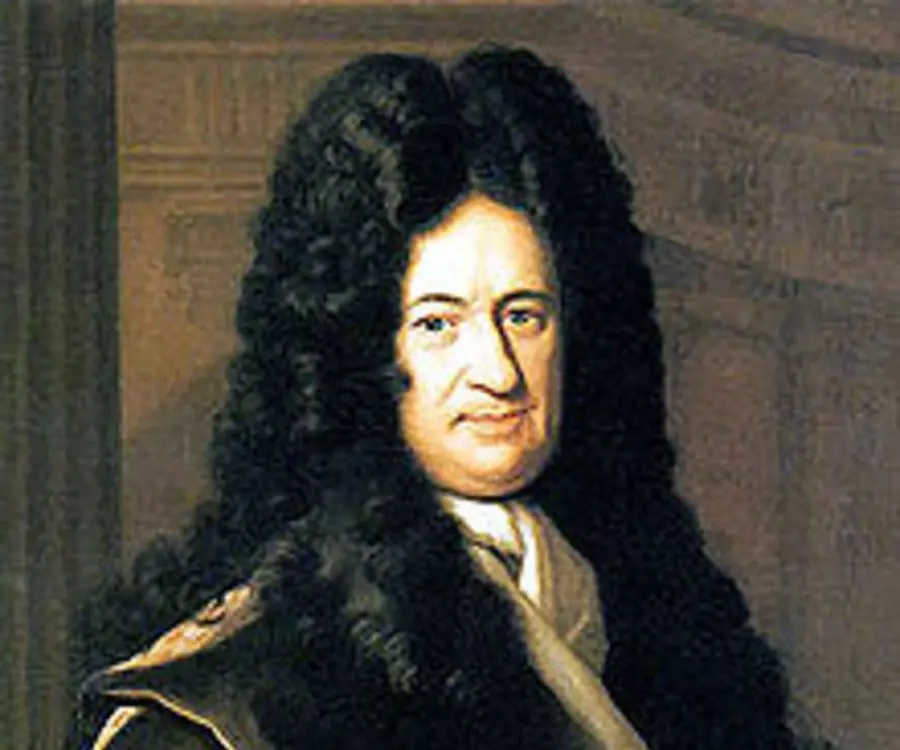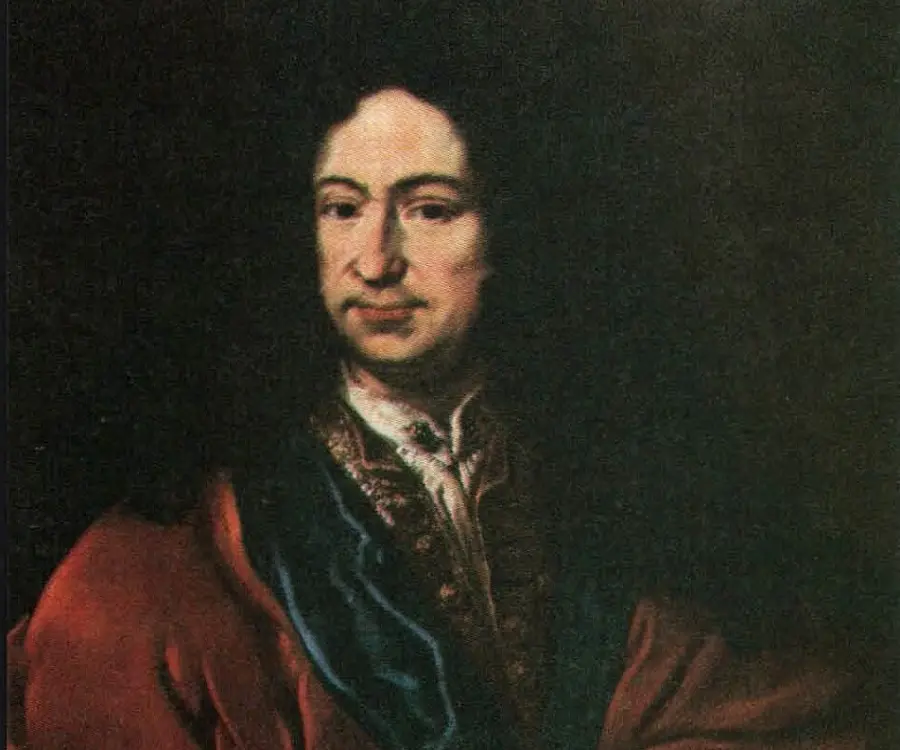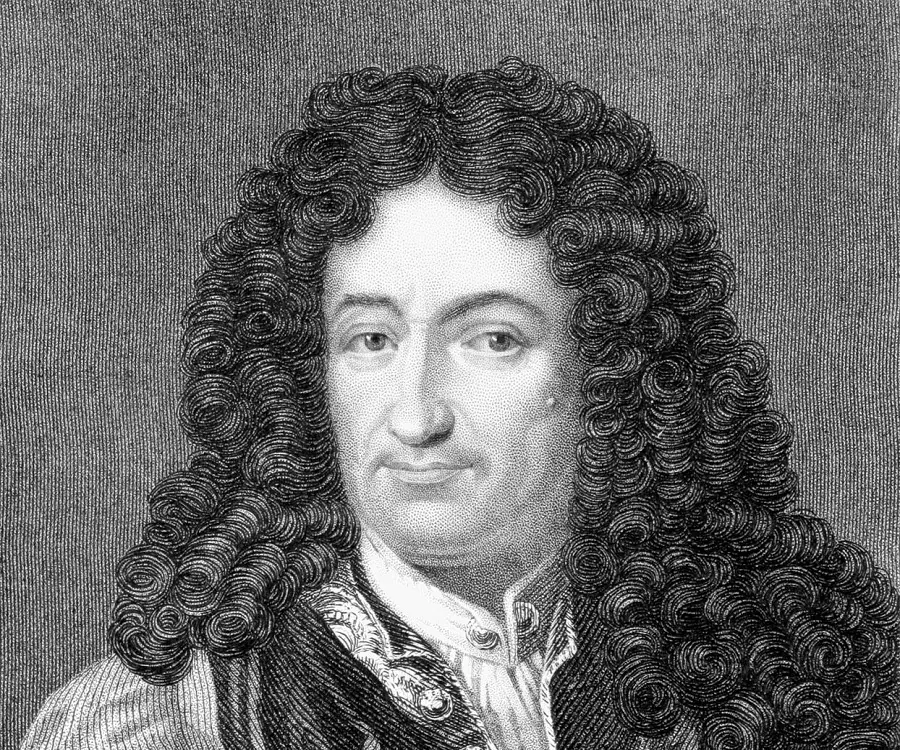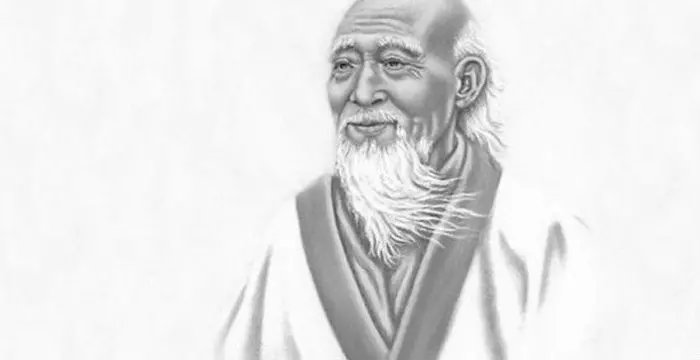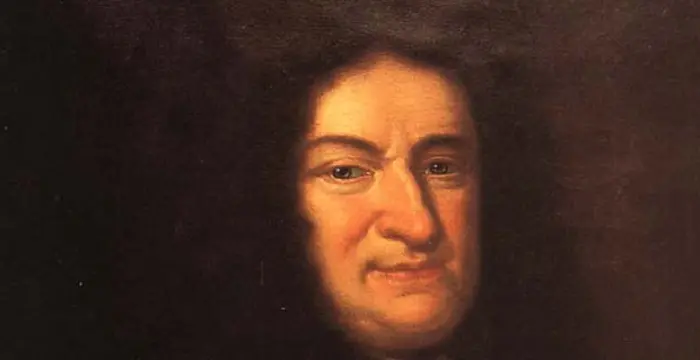
Gottfried W. Leibniz - Mathematicians, Birthday and Facts
Gottfried W. Leibniz's Personal Details
Gottfried W
| Information | Detail |
|---|---|
| Birthday | July 1, 1646 |
| Died on | November 14, 1716 |
| Nationality | German |
| Famous | Intellectuals & Academics, Philosophers, Mathematicians |
| Universities |
|
| Discoveries / Inventions |
|
| Birth Place | Leipzig, Electorate of Saxony, Holy Roman Empire |
| Religion | Lutheran |
| Gender | Male |
| Father | Friedrich Leibniz |
| Mother | Catharina Schmuck |
| Sun Sign | Cancer |
| Born in | Leipzig, Electorate of Saxony, Holy Roman Empire |
| Famous as | Philosopher, Mathematician |
| Died at Age | 70 |
// Famous Intellectuals & Academics
Bertil Gotthard Ohlin
Bertil Gotthard Ohlin was a famous Swedish economist. This biography profiles his childhood, family life & achievements.
Emily Greene Balch
Emily Greene Balch was an American economist, sociologist and pacifist who won the 1946 Nobel Peace Prize. This biography of Emily Greene Balch provides detailed information about her childhood, life, achievements, works & timeline.
Martin Buber
One of the greatest philosophers to have ever walked on earth, Martin Buber contributions to philosophy is a long-standing one. Explore all about his profile, childhood, life and timeline here.
Gottfried W. Leibniz's photo
Who is Gottfried W. Leibniz?
Gottfried Wilhelm Leibniz was a noted German polymath, philosopher, meta-physicist, historian, lawyer and political advisor. Born in the same era as Isaac Newton, in his lifetime he was accused of plagiarizing Newton’s work, but since 1900, scholars have acknowledged that he developed differential and integral calculus, independently of Newton. Today, he finds an important place in the history of mathematics, being acknowledged also for inventing Leibniz's notation, Law of Continuity and Transcendental Law of Homogeneity. Moreover, his works on binary system form the basis of modern computers. He was also a prolific inventor in the field of mechanical calculator, being first to describe a pinwheel calculator, later inventing the Leibniz wheel. In the field of philosophy, he views are considered optimistic and in metaphysics, he is best-known for his theory of monads, which he described as elementary particles with blurred perceptions of one another. Unfortunately, for a man as talented as he was, he received little appreciation during his life time and died a lonely death in Hanover; his funeral being shunned by all except his private secretary.
// Famous Mathematicians
Grigori Perelman
Grigori Perelman is a Russian mathematician who is best known for his contributions to Riemannian geometry and geometric topology. Check out this biography to know about his childhood, family life, achievements and fun facts about him.
Terence Tao
Terence Tao is an Australian- American mathematician who has contributed enormously to the field of mathematics. Check out this biography to know about his childhood, family life and achievements.
Isaac Newton
Isaac Newton was an English scientist and mathematician, who discovered gravitation and Newtonian Mechanics. Read this biography to find more on his life.
Childhood & Early Life
Gottfried Wilhelm Leibniz was born on July 1, 1646 in Leipzig, Germany. His father, Friedrich Leibniz, was the Professor of Moral Philosophy and the Chairman of the faculty of philosophy at Leipzig University. He was also a lawyer and notary register. Gottfried’s mother, Catharina nee Schmuck, was his third wife.
Gottfried was the elder of his parents’ two children, having a younger sister named Anna Katharina Leibniz Löffler. From his father’s two previous marriages, he also had five half-siblings; Anna Rosina Leibniz, Johann Friedrich Leibniz, Elisabeth Leibniz, Anna Magdalena Leibniz, and Susanna Leibniz.
His father died in 1652. Thereafter, he was brought up by his mother, gaining his moral and religious values from her. These would one day play an important part in his philosophy.
In 1653, he was admitted to Nicolai School in Leipzig, where his education was confined mainly to the study of a small canon of authorities. But at home, he had his father’s vast library opened to him and there he started reading books much advanced for his age.
By the age of twelve, Gottfried had taught himself advanced Latin and also a little bit of Greek in order to read his father’s collection of books. By thirteen, he had gained enough expertise to be able to compose 300 hexameters of Latin verses for a school event.
In April 1661, Gottfried Leibniz enrolled at the University of Leipzig with philosophy and mathematics. In addition to that, he also had to study rhetoric, Latin, Greek and Hebrew. Unfortunately, the standard of teaching in mathematics was not good at Leipzig.
On June 9, 1663, Leibniz defended his baccalaureate thesis, ‘Disputatio Metaphysica de Principio Individui’ (Metaphysical Disputation on the Principle of Individuation), which earned him his bachelor’s degree in Philosophy. Thereafter, he spent the summer term at Jena, studying mathematics with Erhard Weigel.
By October 1663, Leibniz was back at Leipzig, working for his M.A. in philosophy, defending his dissertation, ‘Specimen Quaestionum Philosophicarum ex Jure collectarum’ (An Essay of Collected Philosophical Problems of Right) on February 7, 1664. Thereafter he began to study law.
On September 28, 1665, on defending his dissertation entitled ‘De conditionibus’ (On Conditions), he earned his bachelor’s degree in law. Next he started working for his habilitation, defending his thesis in March 1666. It was later published in book form as, ‘Dissertatio de arte combinatoria’ (On the Combinatorial Art).
He next started working for his doctorate in law. But possibly because of his young age and limited tutorships in law, the University of Leipzig refused permission, as a result of which, he immediately shifted to the University of Altdorf.
At Altdorf, he quickly submitted the thesis, which he had begun writing at Leipzig. Entitled, ‘Disputatio Inauguralis de Casibus Perplexis in Jure’ (Inaugural Disputation on Ambiguous Legal Cases), it earned him his doctorate in law and also his license to practice in February 1667.
With Elector of Mainz
In 1667, on completion of his education, Leibniz received an offer from the University of Altdorf for an academic post; but as he had other ideas and dreams, he declined the offer. Instead, he took up the position of a salaried secretary to an alchemical society in Nuremberg.
In Nuremberg, he met Johann Christian von Boyneburg, who immediately became his mentor, introducing him to Elector of Mainz, Johann Philipp von Schönborn. Impressed with his knowledge of law, the Elector asked him to assist with the redrafting of the legal code, a position he happily accepted.
In 1669, Leibniz was appointed the Assessor in the Court of Appeal. In the same year, he received an invitation from John Frederick, Duke of Brunswick-Lüneburg to visit Hanover, but declined.
At that time, King Louis XIV of France was posing a serious threat to Germany, which was already devastated by the Thirty Year War. In 1670, Leibniz published a pamphlet, in which he proposed a defensive coalition of the northern European Protestant countries.
He also conceived a plan, through which he hoped to divert Louis XIV’s attention, by persuading him to engage in a holy war to non-Christian Egypt and later occupy territories under Dutch East Indies. This, he hoped would give Germany a chance to revive its economy.
All the while, he continued with his intellectual pursuit, publishing his fourth book, ‘Hypothesis Physica Nova’ in 1671. By then, he had also started making a calculating machine, which he hoped would create an interest in the scientific fraternity.
He also made contact with Oldenburg, the secretary of the Royal Society of London and Carcavi of the Royal Librarian in Paris, dedicating some of his scientific works to Royal Society and Paris Academy. He now wanted to meet them in person.
The opportunity came when in 1672 Leibniz was invited by the French government to discuss his plan on Egyptian expedition. But as he reached Paris, the Franco-Dutch War broke out, making his plan irrelevant. But the visit proved profitable from a more important angle.
In Paris, he met Dutch physicist and mathematician Christiaan Huygens and talking to him, he realized that his knowledge of mathematics and physics was highly superfluous. Under Huygens’ mentorship, he now began to study the subjects, gaining more in-depth knowledge in them.
By early 1673, it was clear that France was in no mood to take part in the Egyptian mission. The Elector now sent Leibniz to England with similar objective. Their mission ended abruptly when the news about Elector’s death in February 1673 reached England; but Leibniz greatly profited from the visit.
In London, he visited the Royal Society where he demonstrated his calculating machine, capable of executing the four basic operations. It led to his election as an external member of the Royal Society on April 19, 1693.
Conflict with Newton
With the death of Boyneburg in December 1672 and the Elector of Mainz in February 1673, Leibniz was left without a patron. Sometime in 1673, while he was living in Paris, Duke John Frederick of Brunswick offered him the post of counselor.
More interested in a position in Paris, Leibniz managed to delay his joining until December 1676. Meanwhile in late 1675, he laid the foundations of both integral and differential calculus; and by autumn 1676, he discovered the familiar d(xn) = nxn-1dx for both integral and fractional
Some time now, Newton, who was also working on the same subject, wrote a letter to Leibniz, in which he listed many of his results, without describing the methods. The letter took long time to reach Leibniz in Paris. Not realizing the situation, Leibniz thought he had time to answer the letter.
Newton’s letter also made him realize that he must quickly publish a fuller account of his own method, which he did. Newton wrote another letter, accusing Leibniz of stealing his formula. In his reply, Leibniz provided certain details on his work, but the conflict continued to persist.
Although he would have liked to remain in Paris with a position at the Academy of Science no such offer came his way mainly because there were already too many foreigners there. Therefore in October 1676, he left for Hanover, making short visit at England and Holland on the way.
If he had hoped to resolve his conflict with Newton during his visit to England, it did not happen. Ultimately, he reached Hanover in December 1676, remaining there for rest of his life.
In Hanover
In Hanover, Leibniz was initially appointed librarian of the ducal library, where he was given mundane responsibilities like looking after general administration, purchase of books etc. In doing so, he established the foundation of library science.
In 1678, he was appointed Privy Counselor of Justice of the House of Hanover. Apart from his official duties, he also took up number of other projects, devising tools and draining water from the mines of the Harz Mountains, using water pumps run by wind mills and water power
He also continued with his intellectual pursuit, developing a coherent system on calculus by 1677 and perfecting the binary system of numeration by March 1679. Towards the end of the same year, he proposed the basis for topology. Later he started working on his theory of dynamics.
After the death of Duke John Frederick on January 7, 1680, his brother, Ernest Augustus I became the next ruler. Continuing to serve him, Leibniz suggested ways to increase linen production and techniques for the desalinization of water. Concurrently, he continued to develop his theories in metaphysical system and mathematics.
In 1682, he cofounded a journal called Acta Eruditorum with Otto Mencke, publishing most of his important papers in it until 1692. It also became his mouthpiece in his conflict with Newton, which continued until his death.
In 1684, he began his studies on the resistance of solids. In the same year, he published ‘Nova Methodus pro Maximis et Minimis’ (New Method for the Greatest and the Least), which dealt in differential calculus.
In 1685, he was named historian of House of Brunswick and was commissioned to write its history. He was expected to go back to the time of Charlemagne and prove that the House had its origin in the House of Este, allowing it to lay claim on ninth electorate.
Beginning his travel in November 1687, he first traveled to Germany, from there to Austria and Italy, returning to Hanover in July 1690, collecting huge amount of material on the history of the House. Concurrently, he continued with his scholarly works, meeting scholars and publishing works everywhere he went.
Wanting to write a meticulously researched history and busy with other projects, Leibniz failed to produce the book. By then, Ernest Augustus I had died and George Louis, the future British king, was the new Elector. Annoyed with Leibniz for his apparent procrastination, he began to treat him shabbily.
Later Years
In later years, Gottfried Leibniz lost much of his influence in the Court of Hanover and became more embroiled in his dispute with Newton with Royal Society taking Newton’s side. Yet, he continued to enjoy patronage of some powerful ladies, including Electress Sophia, Sophia Charlotte of Hanover and Caroline of Ansbach.
In 1714, under the terms of the 1701 Act of Settlement, Elector George Louis became King George I of Great Britain. Although Leibniz had contributed significantly in finalizing the Act, George I forbade him to join him in London in fear of upsetting Newton and other dignitaries of the court.
Major Work
Today, Leibniz is best remembered for developing differential and integral calculus independently of Isaac Newton. Although scholars at that time accused him of plagiarizing Newton’s works, later writers have pointed out important differences between Leibniz's and Newton's versions of calculus, thus acquitting him of the charge.
Death & Legacy
Gottfried Leibniz never married; neither did he have any other relative except his sister’s stepson, who was also his sole heir. At his death, he left him considerable sum of money.
Leibniz died in Hanover on November 14, 1716. At that time, he was so much out of favour that nobody but his personal secretary attended his funeral. His grave also remained unmarked.
Neither the Royal Society nor the Berlin Academy of Science, of which he was a life member, passed any resolution in his honor. However, he was eulogized before the French Academy of Science; but that too at the behest of the Duchess of Orleans.
// Famous Philosophers
Martin Buber
One of the greatest philosophers to have ever walked on earth, Martin Buber contributions to philosophy is a long-standing one. Explore all about his profile, childhood, life and timeline here.
Lao Tzu (Laozi)
Lao Tzu was a legendary Chinese philosopher who wrote the important “Daodejing”. This biography profiles his childhood, life, career, achievements and timeline.
Alan Watts
Alan Watts was a famous British philosopher known for his Zen teachings and interpretations of Eastern philosophy. Read more about this great philosopher in the following article.
Gottfried W. Leibniz biography timelines
- // 1st Jul 1646Gottfried Wilhelm Leibniz was born on July 1, 1646 in Leipzig, Germany. His father, Friedrich Leibniz, was the Professor of Moral Philosophy and the Chairman of the faculty of philosophy at Leipzig University. He was also a lawyer and notary register. Gottfried’s mother, Catharina nee Schmuck, was his third wife.
- // 1652His father died in 1652. Thereafter, he was brought up by his mother, gaining his moral and religious values from her. These would one day play an important part in his philosophy.
- // 1653In 1653, he was admitted to Nicolai School in Leipzig, where his education was confined mainly to the study of a small canon of authorities. But at home, he had his father’s vast library opened to him and there he started reading books much advanced for his age.
- // 1661In April 1661, Gottfried Leibniz enrolled at the University of Leipzig with philosophy and mathematics. In addition to that, he also had to study rhetoric, Latin, Greek and Hebrew. Unfortunately, the standard of teaching in mathematics was not good at Leipzig.
- // 1663On June 9, 1663, Leibniz defended his baccalaureate thesis, ‘Disputatio Metaphysica de Principio Individui’ (Metaphysical Disputation on the Principle of Individuation), which earned him his bachelor’s degree in Philosophy. Thereafter, he spent the summer term at Jena, studying mathematics with Erhard Weigel.
- // 1663By October 1663, Leibniz was back at Leipzig, working for his M.A. in philosophy, defending his dissertation, ‘Specimen Quaestionum Philosophicarum ex Jure collectarum’ (An Essay of Collected Philosophical Problems of Right) on February 7, 1664. Thereafter he began to study law.
- // 1665On September 28, 1665, on defending his dissertation entitled ‘De conditionibus’ (On Conditions), he earned his bachelor’s degree in law. Next he started working for his habilitation, defending his thesis in March 1666. It was later published in book form as, ‘Dissertatio de arte combinatoria’ (On the Combinatorial Art).
- // 1667At Altdorf, he quickly submitted the thesis, which he had begun writing at Leipzig. Entitled, ‘Disputatio Inauguralis de Casibus Perplexis in Jure’ (Inaugural Disputation on Ambiguous Legal Cases), it earned him his doctorate in law and also his license to practice in February 1667.
- // 1667In 1667, on completion of his education, Leibniz received an offer from the University of Altdorf for an academic post; but as he had other ideas and dreams, he declined the offer. Instead, he took up the position of a salaried secretary to an alchemical society in Nuremberg.
- // 1670At that time, King Louis XIV of France was posing a serious threat to Germany, which was already devastated by the Thirty Year War. In 1670, Leibniz published a pamphlet, in which he proposed a defensive coalition of the northern European Protestant countries.
- // 1671All the while, he continued with his intellectual pursuit, publishing his fourth book, ‘Hypothesis Physica Nova’ in 1671. By then, he had also started making a calculating machine, which he hoped would create an interest in the scientific fraternity.
- // 1672The opportunity came when in 1672 Leibniz was invited by the French government to discuss his plan on Egyptian expedition. But as he reached Paris, the Franco-Dutch War broke out, making his plan irrelevant. But the visit proved profitable from a more important angle.
- // 1672With the death of Boyneburg in December 1672 and the Elector of Mainz in February 1673, Leibniz was left without a patron. Sometime in 1673, while he was living in Paris, Duke John Frederick of Brunswick offered him the post of counselor.
- // 1673By early 1673, it was clear that France was in no mood to take part in the Egyptian mission. The Elector now sent Leibniz to England with similar objective. Their mission ended abruptly when the news about Elector’s death in February 1673 reached England; but Leibniz greatly profited from the visit.
- // 1675More interested in a position in Paris, Leibniz managed to delay his joining until December 1676. Meanwhile in late 1675, he laid the foundations of both integral and differential calculus; and by autumn 1676, he discovered the familiar d(xn) = nxn-1dx for both integral and fractional
- // 1676Although he would have liked to remain in Paris with a position at the Academy of Science no such offer came his way mainly because there were already too many foreigners there. Therefore in October 1676, he left for Hanover, making short visit at England and Holland on the way.
- // 1677He also continued with his intellectual pursuit, developing a coherent system on calculus by 1677 and perfecting the binary system of numeration by March 1679. Towards the end of the same year, he proposed the basis for topology. Later he started working on his theory of dynamics.
- // 1678In 1678, he was appointed Privy Counselor of Justice of the House of Hanover. Apart from his official duties, he also took up number of other projects, devising tools and draining water from the mines of the Harz Mountains, using water pumps run by wind mills and water power
- // 1680After the death of Duke John Frederick on January 7, 1680, his brother, Ernest Augustus I became the next ruler. Continuing to serve him, Leibniz suggested ways to increase linen production and techniques for the desalinization of water. Concurrently, he continued to develop his theories in metaphysical system and mathematics.
- // 1682In 1682, he cofounded a journal called Acta Eruditorum with Otto Mencke, publishing most of his important papers in it until 1692. It also became his mouthpiece in his conflict with Newton, which continued until his death.
- // 1684In 1684, he began his studies on the resistance of solids. In the same year, he published ‘Nova Methodus pro Maximis et Minimis’ (New Method for the Greatest and the Least), which dealt in differential calculus.
- // 1685In 1685, he was named historian of House of Brunswick and was commissioned to write its history. He was expected to go back to the time of Charlemagne and prove that the House had its origin in the House of Este, allowing it to lay claim on ninth electorate.
- // 1687Beginning his travel in November 1687, he first traveled to Germany, from there to Austria and Italy, returning to Hanover in July 1690, collecting huge amount of material on the history of the House. Concurrently, he continued with his scholarly works, meeting scholars and publishing works everywhere he went.
- // 1693In London, he visited the Royal Society where he demonstrated his calculating machine, capable of executing the four basic operations. It led to his election as an external member of the Royal Society on April 19, 1693.
- // 1699In 1669, Leibniz was appointed the Assessor in the Court of Appeal. In the same year, he received an invitation from John Frederick, Duke of Brunswick-Lüneburg to visit Hanover, but declined.
- // 1714In 1714, under the terms of the 1701 Act of Settlement, Elector George Louis became King George I of Great Britain. Although Leibniz had contributed significantly in finalizing the Act, George I forbade him to join him in London in fear of upsetting Newton and other dignitaries of the court.
- // 1716Leibniz died in Hanover on November 14, 1716. At that time, he was so much out of favour that nobody but his personal secretary attended his funeral. His grave also remained unmarked.
// Famous Cancer Celebrities peoples
Jacob Elordi
Jacob Elordi is an Australian actor. Let’s take a look at his childhood, family, personal life, career, etc.
Riele Downs
Riele Downs is a Canadian-American actress & Musical.ly star. Let’s take a look at her family and personal life including age, birthday, net worth, boyfriends and fun facts.
Yammy Xox
Check out all that you wanted to know about Yammy Xox, the famous British YouTube Personality; her birthday, her family and personal life, her boyfriends, fun trivia facts and more.
Kaylee Quinn
Kaylee Quinn is an American dancer, model, and actress. Let’s have a look at her family and personal life including age, date of birth, net worth, relationships, and fun facts.
Sophia Montero
Sophia Montero is an American singer and YouTuber. Let’s have a look at her family and personal life including age, date of birth, net worth, relationships, and fun facts.
Domo Wilson
Check out all that you wanted to know about Domo Wilson, the famous American Vlogger & YouTube Personality; her birthday, her family and personal life, fun trivia facts and more.
Gottfried W. Leibniz's FAQ
What is Gottfried W. Leibniz birthday?
Gottfried W. Leibniz was born at 1646-07-01
When was Gottfried W. Leibniz died?
Gottfried W. Leibniz was died at 1716-11-14
Where was Gottfried W. Leibniz died?
Gottfried W. Leibniz was died in Hanover
Which age was Gottfried W. Leibniz died?
Gottfried W. Leibniz was died at age 70
Where is Gottfried W. Leibniz's birth place?
Gottfried W. Leibniz was born in Leipzig, Electorate of Saxony, Holy Roman Empire
What is Gottfried W. Leibniz nationalities?
Gottfried W. Leibniz's nationalities is German
What was Gottfried W. Leibniz universities?
Gottfried W. Leibniz studied at University of Altdorf, Friedrich Schiller University of Jena, University of Leipzig
What is Gottfried W. Leibniz's inventions/discoveries?
Infinitesimal Calculus was invented (or discovered) by Gottfried W. Leibniz
What is Gottfried W. Leibniz's religion?
Gottfried W. Leibniz's religion is Lutheran
Who is Gottfried W. Leibniz's father?
Gottfried W. Leibniz's father is Friedrich Leibniz
Who is Gottfried W. Leibniz's mother?
Gottfried W. Leibniz's mother is Catharina Schmuck
What is Gottfried W. Leibniz's sun sign?
Gottfried W. Leibniz is Cancer
How famous is Gottfried W. Leibniz?
Gottfried W. Leibniz is famouse as Philosopher, Mathematician



